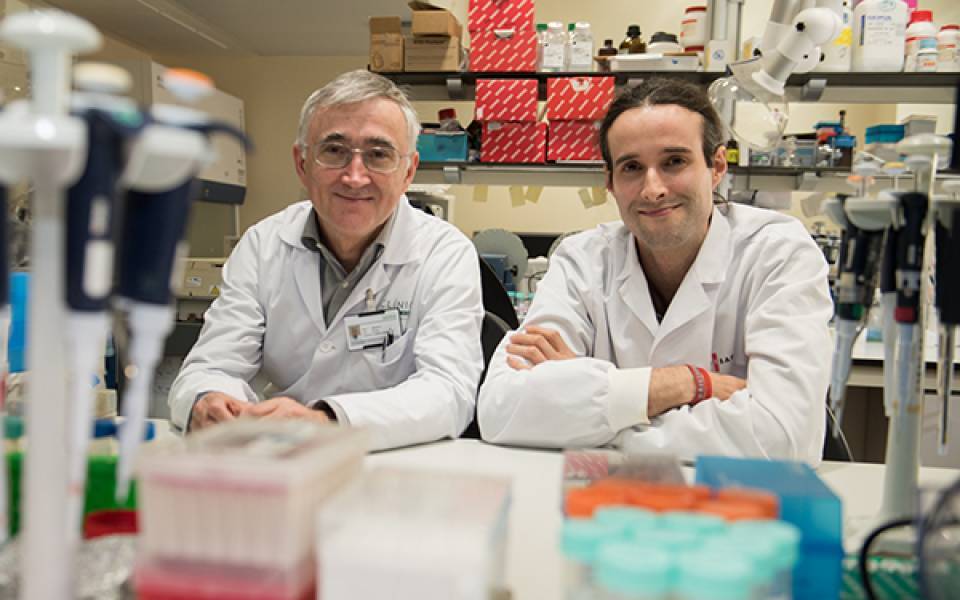Mantle cell lymphoma is considered a clinically aggressive type of lymphoma. However, there are some patients in whom the disease manifests mildly while in others it is very aggressive and has a fatal outcome. The causes of this clinical complexity are little known. Researchers have dissected the role of epigenetics in this type of lymphoma and have not only accurately described the evolutionary history of each patient, but also propose a new strategy to predict the aggressiveness of the disease based on its degree of epigenetic evolution.
Among the different epigenetic mechanisms, DNA methylation defines cellular identity and prints the evolutionary history of cells in DNA. Through the study of DNA methylation, researchers have analyzed in depth the mechanisms that influence the aggressiveness of lymphoma and have discovered two key factors: its origin and degree of evolution. Lymphomas that are derived from immature B lymphocytes are more aggressive than those evolving from mature B lymphocytes. However, according to Dr. Iñaki Martín-Subero, "in our study, the most important factor to explain the clinical aggressiveness is the degree of evolution of the tumor from its cell of origin. It seems that those tumors that have evolved a lot become stronger and their prognosis is adverse".
Beyond DNA methylation
The same researchers published an article in Nature Genetics last year, in which they proposed that only a proportion of changes in the degree of methylation in tumor cells are related to cancer itself. In this work, researchers have gone one step further and, through the simultaneous study of several epigenetic mechanisms, have brought to light which are the altered regions that play a key role in cancer.
To understand it, Dr. Martin-Subero explains that, "we can imagine the epigenome as an orchestra playing a melody. The melody is the end result, the expression of the genes, and the different musicians of the orchestra are the different epigenetic mechanisms. You cannot understand the melody without knowing what each musician is doing. In this study we have analyzed each of the musicians of the epigenetic orchestra to understand how the melody changes in lymphoma".
Of the thousands of regions in which DNA methylation changes in lymphomas, only a small proportion modify their function and, therefore, may be directly associated with tumor development. Dr. Elías Campo, an international expert on lymphomas, says that "identifying the regions that change their function in lymphoma will allow us to think about the development of more precise treatments that target those molecular alterations that transform normal cells into tumor cells".
Changes in the three-dimensional structure of DNA in lymphomas
Among the regions with key epigenetic changes in lymphoma development, researchers focused on a particular gene, SOX11. A few years ago Dr. Campo's group discovered that the SOX11 gene was altered in the most aggressive mantle cell lymphomas. "In 2010, we discovered that activation of the SOX11 gene is important in the development of lymphoma, but the cause of such activation has been a riddle during all these years", explains Dr. Campo. The key to deciphering this puzzle is the integration of several epigenetic marks with the three-dimensional structure of DNA. "By studying the epigenome in patients with activated SOX11, we identified a region far from the gene that had high levels of activation. When analyzing the three-dimensional structure of this distant region, we observed that the DNA folded placing this region above the SOX11 gene, activating it", explains Dr. Martin-Subero. "This study underscores the importance of integrating epigenetic layers to better understand molecular alterations in this type of lymphoma, and paves the way for similar studies in other cancers", he concludes.
This study is part of the European Union-funded Blueprint project, which is part of the International Human Epigenome Consortium (IHEC). With an investment of 30 million euros, the Blueprint project is responsible for generating at least 100 reference epigenomes from the blood cells of healthy people and with different associated diseases like leukemias, lymphomas or autoimmune diseases. The team of Drs. Martín-Subero and Campo is responsible for generating the epigenome of B lymphocytes and various types of cancers derived from this cell type, including mantle cell lymphoma.
The International Consortium of the Human Epigenome
In 2003, scientists completed the Human Genome Project, which sequenced our genetic material for the first time. This milestone in the history of science gave rise to several additional projects, one of them being the Human Epigenome Project. If the genome sequence defines the personal identity, the epigenome defines the cellular identity. Therefore, each of us has a genome, but we have hundreds of epigenomes in our bodies, as many different cell types. In addition, the epigenome is not stable, can change with age, environmental exposures and also changes widely in the context of diseases such as cancer. Therefore, the Human Epigenome Project is an international challenge of great caliber and complexity.
On November 17, 2016, the International Human Epigenome Consortium (IHEC) publishes 42 articles that have sequenced the epigenome of various cell types and diseases. These articles represent the work of several groups that compose the IHEC, which are developed in Germany, Canada, South Korea, the United States, Japan, Singapore and the European Union.

